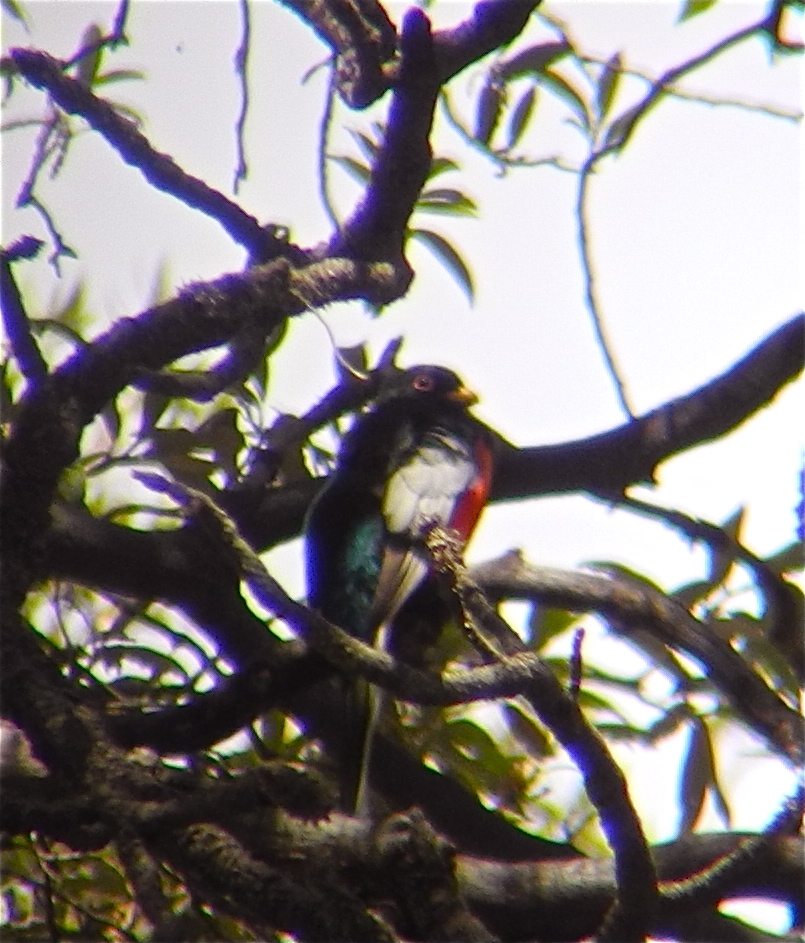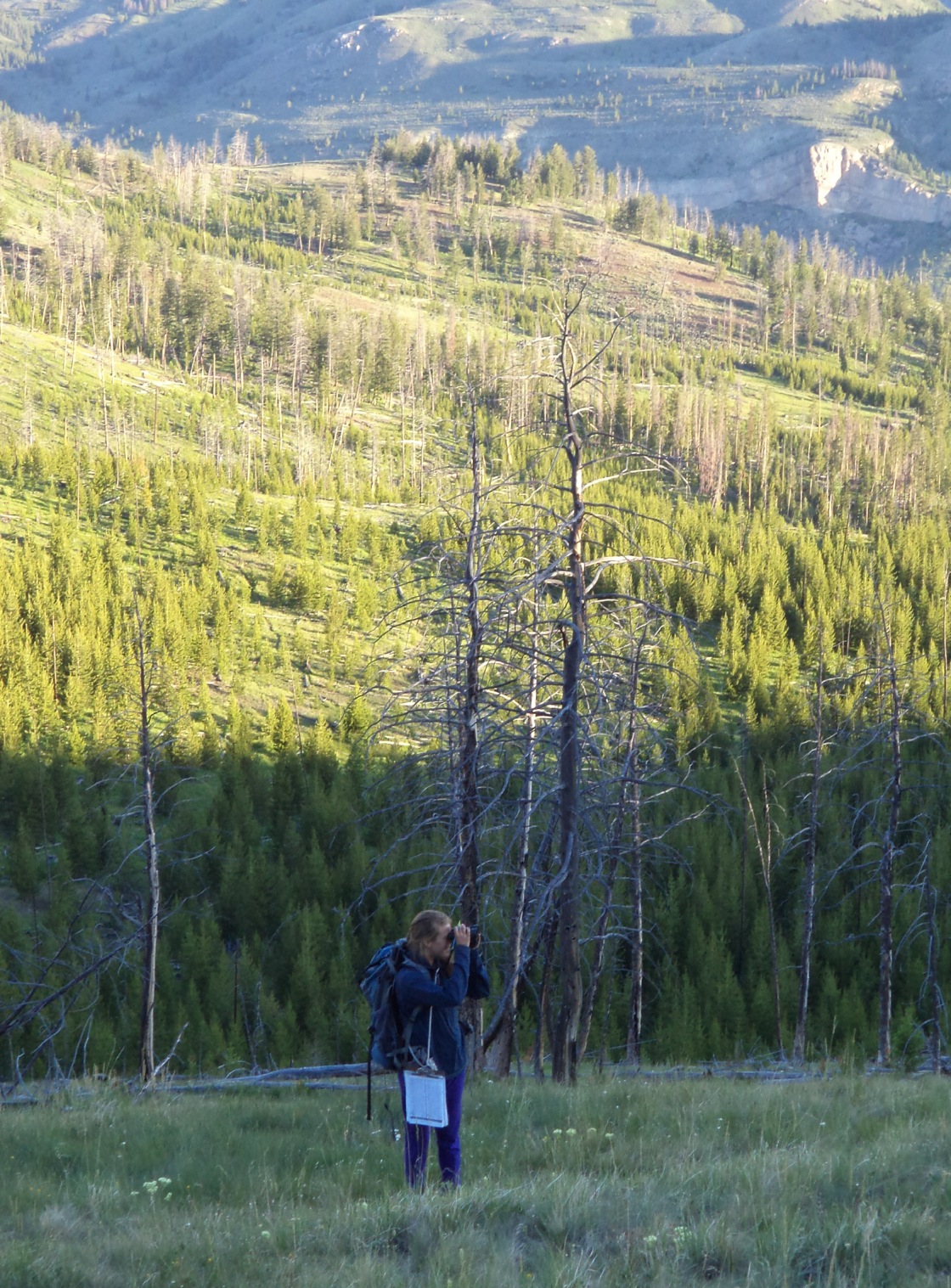Now that fall is upon us in the Rockies, RMBO biologists and technicians are finishing proofing data gathered this summer under the Integrated Monitoring in Bird Conservation Regions (IMBCR) program. The IMBCR program is one of the largest breeding bird monitoring programs in North America, stretching from Arizona’s deserts to Montana’s mountain peaks, so we’ve had quite a bit of data to proof. But with proofing data comes the confirmation of cool new species for the program.
A few interesting places were added to the IMBCR program in 2013, including the Caribou-Targhee National Forest in the central Rockies, the Carson National Forest in northern New Mexico and the Coronado National Forest in the southwestern U.S. Expanding our efforts southward led us to a few species observed for the first time during IMBCR surveys, including Elegant Trogon, Five-striped Sparrow, Flame-colored Tanager, Botteri’s Sparrow and Magnificent Hummingbird.

Adding new places is a surefire way to see exciting new birds, but sometimes RMBO and its partners detect novel species in places we’ve been surveying for a while. This past summer, the Idaho Bird Observatory observed a Mountain Quail in Nez Perce National Forest for the first time, despite having surveyed there for several years under the IMBCR program.
A Look at the Numbers
RMBO launched the IMBCR program in 2009, conducting a total of 636 surveys with its partners that year. Because of its large scale, strong scientific design and efficiency, the program expanded greatly over the next four years. This past summer, RMBO and its partners conducted 1,363 surveys across all or parts of 13 states, detecting more than 180,000 individuals of more than 350 different bird species.
One advantage of the IMBCR program is surveys are conducted on both private and public lands, allowing inferences from the data to be made to areas larger than public lands alone. In 2013, more than 630 private landowners gave permission to survey birds on their properties.
Why the IMBCR Program?
Along with covering both private and public lands, the IMBCR program offers a number of benefits to conservationists, land managers, researchers and others interested in bird conservation. Data obtained through the program can help managers compare population estimates of certain species on a local level to population estimates of those species on state or regional levels to see how they’re doing. In turn, this helps managers make informed management decisions about where to focus conservation efforts. For example, if a species of concern has a dense population in a certain area, that area can be targeted for protection, or areas with low populations can be prioritized for conservation action. Once actions have taken place, population estimates from IMBCR data can be compared to state or regional estimates to evaluate the effectiveness of management actions.

Of course, for the data to be useful, they have to be accessible. RMBO makes the data it gathers through the IMBCR and other monitoring programs available to the public through the Avian Data Center. Last year, bird records in the database surpassed the 1.5 million mark and it continues to grow with each season. To facilitate the use of the Avian Data Center, RMBO will be holding several in-person and web-based training sessions in the coming months. Dates and locations of trainings will be posted on RMBO’s website.
We Couldn’t Do It Without You
Thank you to the many partners who make the IMBCR program possible. Funding is provided by the U.S. Forest Service, U.S. Bureau of Land Management, Colorado Parks and Wildlife, Wyoming Game and Fish Department, Montana Fish, Wildlife and Parks, Great Plains Landscape Conservation Cooperative, Northern Great Plains Joint Venture, Great Northern Landscape Conservation Cooperative, U.S. Fish & Wildlife Service: National Wildlife Refuge Program, Colorado State Land Board, Intermountain West Joint Venture and the National Park Service. In addition, the Avian Science Center, Wyoming Natural Diversity Database and Idaho Bird Observatory assist with managing more than 60 technicians who collect IMBCR data during the breeding bird season.
Please stay tuned to the RMBO blog during the 2014 summer breeding bird season for updates from IMBCR field technicians and crew leaders as they travel near and far conducting surveys. Oh, and if counting birds for a living sounds appealing to you, check out RMBO’s jobs board starting in January to see what positions are available and how you can apply.
~ Nick Van Lanen, Biologist







